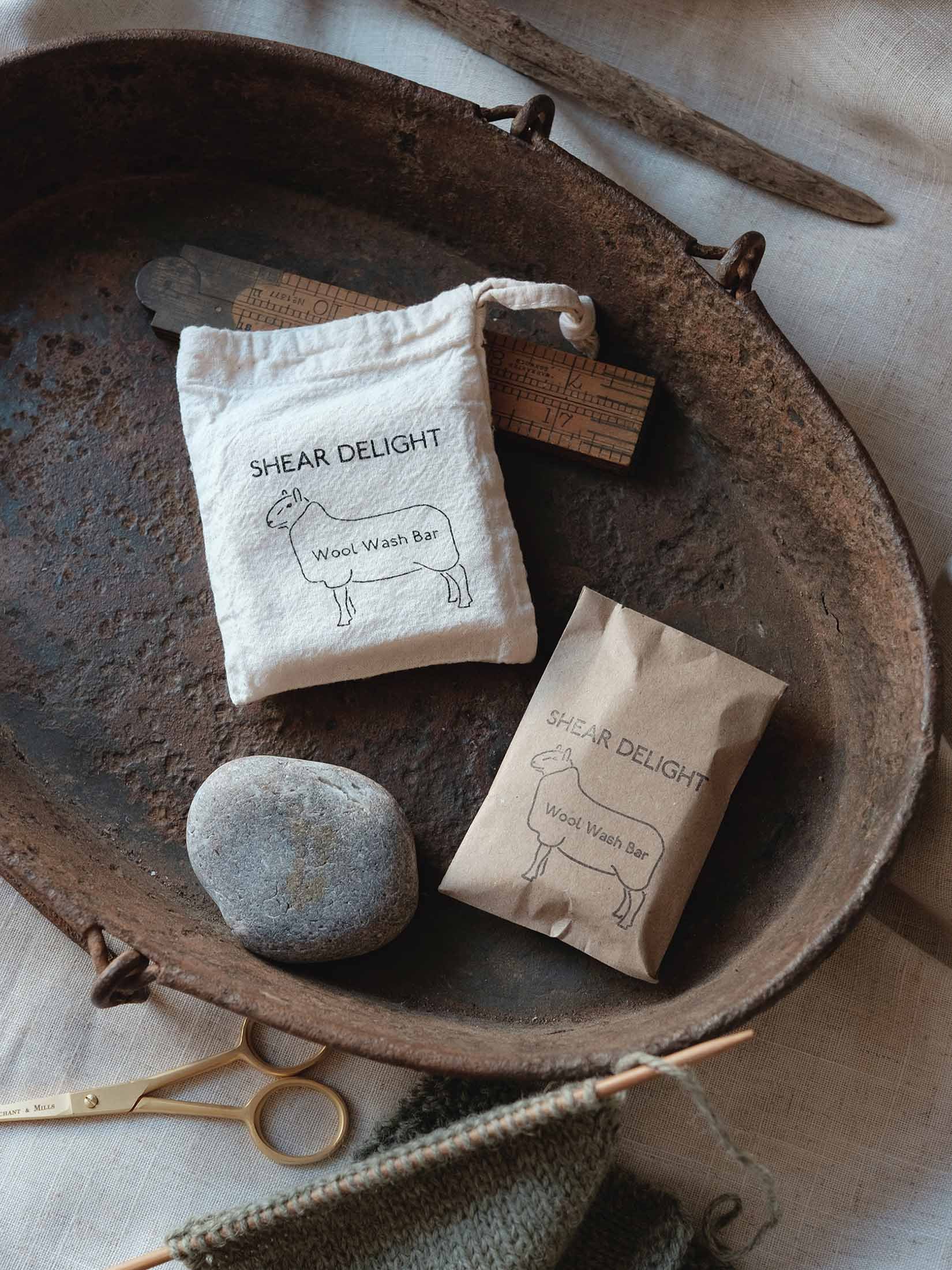Caring for Hand Knitted Socks
Hand knitted socks are one of life’s luxuries! Once you’ve spent all that time knitting them, it’s definitely worth making sure you care for them properly. Here are a few things that you can do to make sure they last as long as possible.
Washing
Socks that are made from non-super wash wool should be always washed by hand. Superwash socks can go in the washing machine (on a wool setting), but hand washing is definitely better for all your knitted socks. Use a gentle no-rinse wool wash and let socks soak in lukewarm water for twenty minutes or so. Once they’ve had a good soak, remove them and gently squeeze out any excess water, being careful not to wring them out or let them stretch under their own weight. Dry flat, or on sock blockers. Hot water and agitation will cause wool to felt, so should both be avoided when washing your socks.
The good news is that wool socks will not need to be washed after every wear. Wool is very breathable and odour resistant, and it will normally be fine to simply air socks out after wearing. Non-superwash wool also holds its shape really well, so socks won't become misshapen after one wear. How many wears you can (or should) go without washing depends on several factors, including the climate, how long you wear them for each time, whether they are actually dirty, and how comfortable you are with re-wearing clothing.
Wearing
I really think you should be able to wear hand knitted socks just like store bought ones, without having to worry about what you do in them. However, it’s just common sense that any socks will last longer if you avoid wearing them outdoors or on rough surfaces. Shoes that snag or rub in a particular place will cause wear to socks. and long toe nails could also be a problem for your hand knits! So while you definitely shouldn’t be too precious, (they’re made to be worn, right?), know that how you treat your socks when they’re on your feet will affect how long they last.
Mending
Hand knitted socks will develop holes over time and need some repairing, however careful you are in them. But it’s really worth doing these repairs well and prolonging the life of your socks. I tend to give mine a quick check over whenever I wash them, so that I can find and repair any weak spots or holes as soon as they appear.
If a hole hasn’t actually formed, and an area is just looking a bit worn, you can reinforce it by sewing over it with a duplicate stitch (or make a feature of it by using a more decorative stitch). However, if there is an actual hole you will need to do a proper darn in order to stop it getting any bigger. See our woven-patch darning tutorial for a useful method for darning small and medium holes.
If the hole has got really large, or you have repaired the same area a number of times, you may wish to replace a section of sock instead (it will normally be a heel or toe!). This seems drastic, but is actually a really good way of making a pair of socks last longer, and could be a fun, technical project. You need to remove the part that you want to replace, pick up the live stitches and then knit the replacement. The method here will depend on how the sock was constructed in the first place, and it will generally be easier to replace toes than heels.
All of these mending techniques can be done using the same, or a similar colour yarn so they don’t notice. However I love seeing the repairs on a pair of socks that I have enjoyed wearing, so I normally try to choose a different colour for darning.
Storage
It’s a good idea to store hand knitted socks separately for the warmer months when you won’t be wearing them (depending on where you live, of course). Before you put socks away for a season, make sure you wash and dry them thoroughly. Moths can be attracted to dirty clothes, and they thrive in damp conditions. Wool can also rot if you put it away wet. As you are giving your socks a wash, check them over for holes or weak areas. This is a really good time to perform any repairs ready for when the weather gets cooler and you need to wear the socks again. It’s also a good time to get rid of any that are past repairing.
Socks should then be stored flat or folded in a breathable cotton bag. Try not to roll them in to each other or store them in a a way that might stretch them. You could place cedar chips or a lavender bag with your socks to repel moths and other insects, and keep them smelling fresh.













